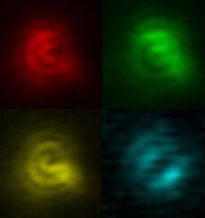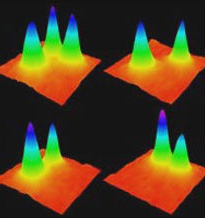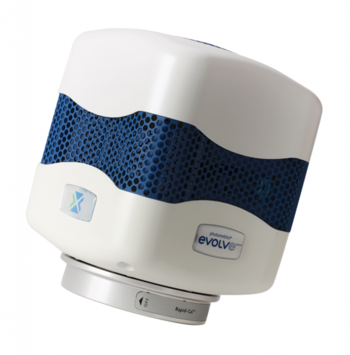Single Molecule Spectroscopy
Dr. Mark Osborne, Lecturer in Physical Chemistry
University of Sussex, School of Life Sciences
Background
Research at Sussex University focuses on the development and application of ultrasensitive optical techniques for the detection and manipulation of single molecules. Representing the ultimate level of sensitivity in the analysis and control of matter, single molecule techniques have many advantages over conventional ensemble methods, namely the measurement of static and dynamic heterogeneity in molecular systems.

Dipole images of a TMRbiocytin
ligand oriented within a streptavidin
protein nanoenvironment.

Intensity images of Quantum Dots
undergoing fluorescence intermittency.
Challenge
The lab uses TIRF imaging on customized laser microscopy platforms to investigate a diverse range of molecular systems, from protein-ligand interactions by dipole imaging and protein-protein interactions in yeast using PALM, to quantum dot (QD) activation and blinking. They set out to pursue a way to improve the quality of defocused dipole images, reduce uncertainties in the location of molecules in PALM and achieve reliable measurements of QD quantum yields.
The Evolve 512 EMCCD camera has performed exceedingly well under challenging and photon-poor conditions.
Dr. Mark Osborne
Solution
The research team selected the Evolve® 512 EMCCD camera (new series now available) and are now using it for single photon counting and to support their diverse set of challenging imaging requirements."The camera has performed exceedingly well under challenging and photon poor conditions," states Osborne. The team is also using Micro-Manager microscopy software for image acquisition and processing.

Learn More About The New Evolve Series